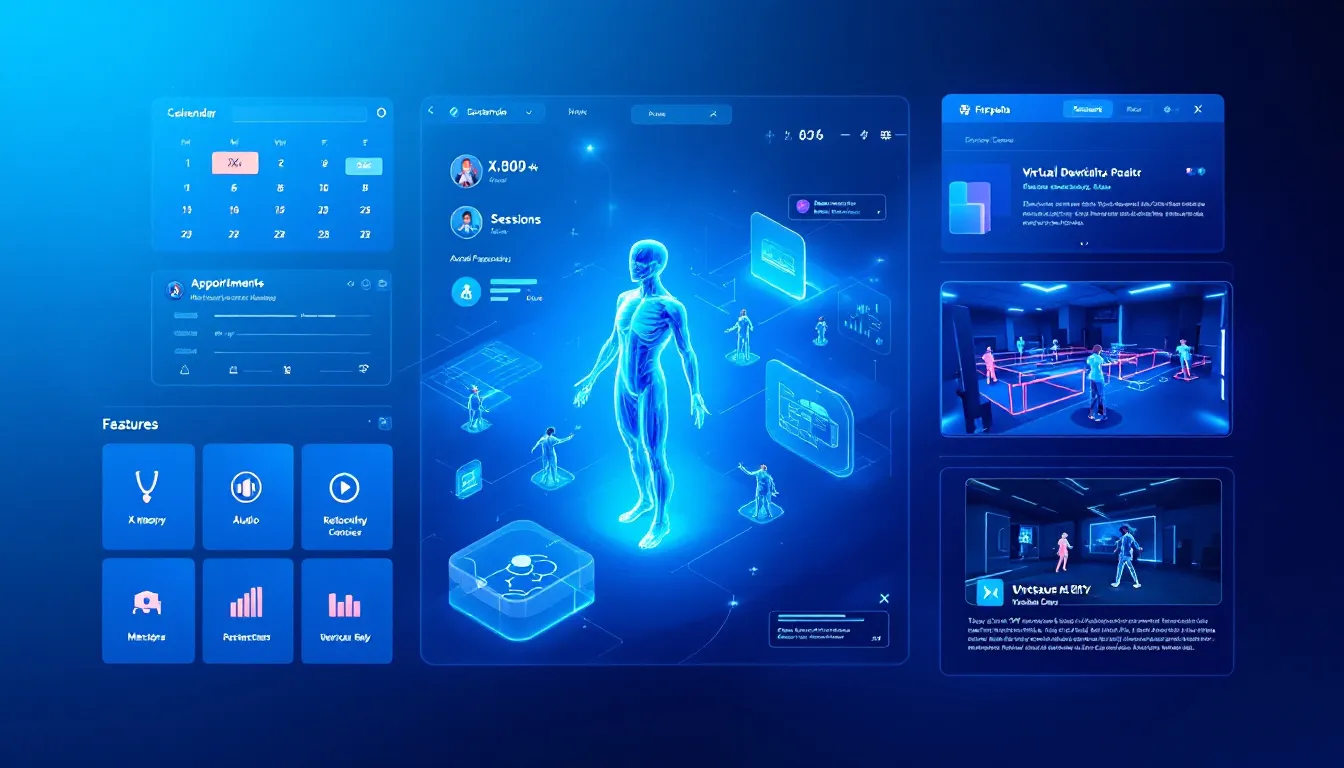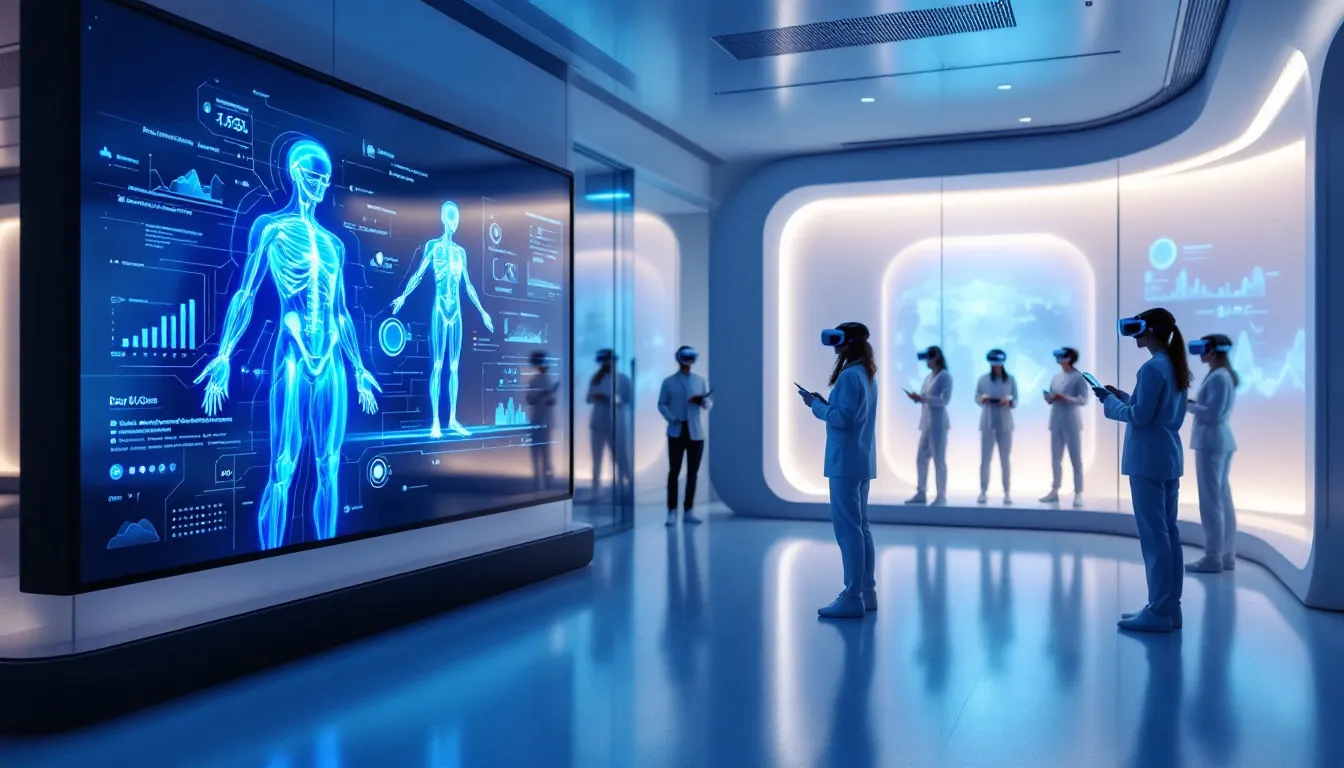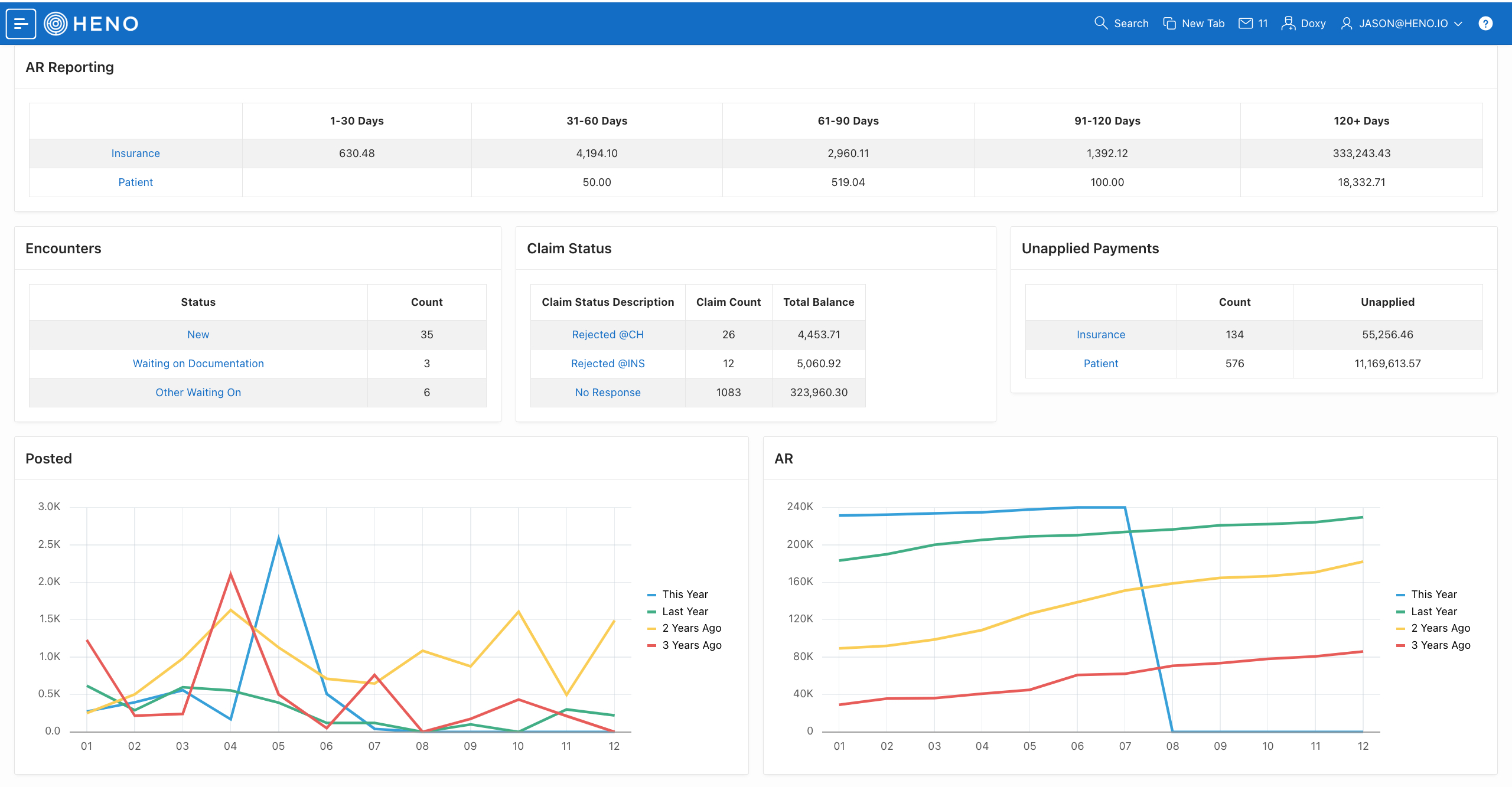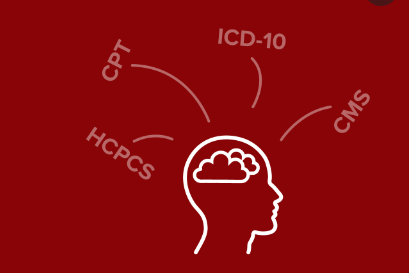Top Physical Therapy Computer Software for Seamless Patient Care

Looking for the best physical therapy computer software? This article covers top solutions, key features, and benefits for streamlining operations and improving patient care.
Key Takeaways
Physical therapy software is like a personal assistant that never sleeps – it handles scheduling, documentation, and billing so therapists can focus on patients instead of paperwork.
With features like automated scheduling and patient portals, physical therapy software turns therapists into scheduling ninjas and patients into care superheroes, improving engagement and satisfaction.
Future tech trends like AI, telehealth, and wearables are about to make physical therapy feel more like a sci-fi movie, improving patient care and making documentation a breeze – no capes necessary!
What is Physical Therapy Computer Software?

Physical therapy software serves as an all-in-one tool for rehabilitation centers and mental health institutions, aimed at simplifying the complexities of patient care. It equips users with capabilities that enhance charting accuracy, automate numerous tasks, and bolster patient engagement—characteristics inherent to this versatile PT software.
At the heart of physical therapy EMR systems are crucial functionalities such as:
Initial patient assessments
Appointment scheduling
Medical records keeping
Management of physical therapy billing processes
Financial accounting procedures
Generation of various reports
This type of software acts like a round-the-clock virtual assistant that integrates everything from arranging appointments to managing financials without interruption.
What’s more impressive is its ability to reduce the time spent on documentation by up to 80%, allowing therapists more opportunity to dedicate themselves fully towards their primary responsibility—the therapeutic care of patients. Practices have the flexibility to customize features according to their specific operational requirements.
Key Features of Physical Therapy Computer Software
Discussing the indispensable ally that physical therapy software has become for therapists is key. It boasts crucial functionalities such as clinical documentation, patient portals, and automated scheduling. These features enhance the efficiency of clinic workflows by simplifying routine tasks and guaranteeing that no detail goes unnoticed.
Choosing the appropriate software necessitates a grasp of these attributes and their alignment with the unique requirements of your physical therapy practice.
Clinical Documentation
Software designed for physical therapy empowers clinics with the tools to customize their clinical documentation, ensuring it meets their specific demands. This specialized approach eliminates a universal template system and elevates both user satisfaction and productivity levels. For example, HENO offers various pre-made templates that cater to different types of physical therapy practices such as orthopedic outpatient services, pelvic floor treatments, or pediatric care. The focus on tailoring physical therapy documentation ensures that each practice functions at its highest capability.
The integration of AI within this software streamlines the process. By automating elements of paperwork and enhancing overall clinical processes, therapists can dedicate more time to providing patient care. Such high-quality software not only bolsters patient outcomes but also reduces chances for errors in documentation—it’s an all-in-one solution managing everything from intake forms through comprehensive oversight of patients’ progression up until full-fledged care coordination takes place seamlessly and effectively.

Automated Scheduling
Should you find yourself longing for assistance in juggling your itinerary, consider automated scheduling as a stellar alternative. By employing automatic reminders, this system significantly reduces the likelihood of missed appointments by alerting clients to their impending consultations. With the use of color-coded calendars for daily organization, therapists can rapidly evaluate their timetables with just a quick look. Imagine being able to populate slots left by cancellations within an expedient 30 seconds through bulk messaging those on standby, such is the proficiency afforded by HENO.
Incorporating functionalities like auto-managed waitlists and digital appointment reservations allows patients to independently book their own sessions. This not only streamlines schedule coordination, thereby enhancing operational effectiveness within clinics, but also elevates patient contentment as it provides them autonomy in managing their schedules.
Having such technology at your disposal is akin to recruiting a virtual aide devoted solely to tackling administrative duties, thus liberating precious time that healthcare providers can redirect towards concentrating on providing outstanding patient care.
Patient Portal
The patient portal is the command center for patient care. It offers features such as secure chat, self-scheduling, automated reminders, online forms, file sharing, homework assignments, invoices, and payments. Telemedicine options further enhance services, allowing remote patient viewing and saving time and resources.
This comprehensive platform not only improves the patient experience, but also engages patients in their own care, making them active participants in their treatment journey.
Benefits of Using Physical Therapy Computer Software

Investing in physical therapy software can significantly benefit your practice, as it brings a multitude of advantages. It not only boosts patient engagement, but also simplifies billing procedures and supports decisions based on solid data analysis. When taking into account the cost associated with physical therapy software, its value becomes evident as a transformative tool for any physical therapist’s office.
This type of software amalgamates multiple operations within one platform, facilitating an effortless transition between handling new patient admissions and managing financial transactions. Such integration propels both operational efficacy and the level of service that patients receive.
Enhanced Patient Engagement
The core of any thriving physical therapy practice is deeply rooted in the engagement of its patients. The integration of sophisticated software streamlines this process by simplifying tasks and refining workflow efficiency. Through advanced online intake forms, patient data is captured with greater precision and completeness, while automated scheduling systems minimize missed appointments by sending reminders through texts and emails. Wearable technology allows physical therapists to track patient movements precisely and tailor treatment plans dynamically, thereby promoting more active involvement from patients, which leads to improved results.
In terms of communication strategies like mass texting and emailing campaigns, these automation tools can dramatically enhance the bond between patients and their clinic as well as bolster retention rates. For example, HENO offers features that permit responses from patients directly via mass text messages enabling a bidirectional dialogue with their healthcare providers.
These technological enhancements embody a comprehensive strategy for boosting patient engagement that ultimately translates into superior outcomes along with heightened levels of satisfaction among both practitioners within physical therapy practices and their clients.

Streamlined Billing Processes
The appropriate billing software can transform the headache of billing into a seamless experience. With functionalities like automated payment alerts and automatic card charging, collecting payments becomes more efficient. By employing automation for claim batching and verification of missing information, this software simplifies the tracking process for claims. TheraOffice’s solution is designed to be adaptable, accommodating each clinic’s specific billing operations.
Incorporating an integrated system within your practice eases financial transactions while safeguarding against revenue leakage. The ability to readily access invoices alongside diverse payment methods enhances the ease with which patients can settle their bills—streamlining administrative tasks for both healthcare providers and their clients. Ultimately, this not only alleviates admin workloads, but also bolsters the efficacy of managing the revenue cycle in clinics.

Data-Driven Decision Making
In today’s era, making decisions based on data is essential. The reporting capabilities of physical therapy software provide valuable insights into areas like income and patient services for clinics. These analytical tools aid in guiding practices to make choices that promote better performance and guarantee superior care for patients.
Utilizing this data enables clinics to refine their procedures and results continually, ensuring a constant enhancement of operations within the sphere of physical therapy.
How to Choose the Best Physical Therapy Software for Your Practice
Choosing the right software for your practice can feel like finding a needle in a haystack. However, by evaluating specific practice needs and software features, you can ensure a good fit. Planning effectively and communicating clearly ensures a smooth software implementation process.
Ongoing staff training helps adapt effectively and maximize the software’s potential. Involving your team ensures a smoother transition and better acceptance.
Evaluating Software Compatibility
Ensuring that new software is compatible with your current systems is essential for the efficient running of physical therapy software. The consolidation of appointment scheduling and billing within the system enhances practice management significantly.
Such flawless integration eliminates inconsistencies in data, guaranteeing that all components of the system function cohesively.
Assessing Customer Support and Training
Customer support can make or break your experience with new software. Robust customer support addresses issues quickly and ensures smooth software operation post-implementation. Vendors should train new users so staff can effectively use updated software features.
Regular feedback from staff about software functionality can help identify areas for improvement.
Considering Pricing Models
Understanding physical therapy software cost ensures a financially sound choice for your practice. Some providers offer tiered pricing, letting clinics choose a plan fitting their size and budget needs.
Knowing the pros and cons of subscription versus one-time purchase models helps clinics decide wisely. This ensures that the chosen software aligns with the clinic’s financial goals and resources.
Leading Physical Therapy Software Solutions in 2024

Having addressed the key points, it’s time to explore the premier physical therapy software options for 2024. These platforms are revolutionizing how physical therapy practices operate by providing an extensive array of functionalities and steadfast support.
Platforms like HENO, WebPT, and Empower EMR lead the pack as they accommodate a range of requirements and financial plans, establishing them as top contenders in the industry.
HENO
Designed specifically by physical therapists to cater to the distinct requirements of physical therapy practices, occupational therapy, and speech therapy, HENO is a comprehensive physical therapy emr solution that integrates all necessary functions within one platform. This includes the capability for 5-minute evaluations. The system’s flexibility makes it suitable for a broad range of clinic sizes, whether they are burgeoning startups or expansive established centers.
The creation of HENO was motivated by an evident gap in the industry regarding efficient software solutions tailored for physical therapy. Consequently, this has positioned HENO as a leading choice in the marketplace.
WebPT
WebPT delivers a powerful ecosystem designed to boost practice management and foster patient engagement. Through advanced communication tools, it achieves higher levels of satisfaction and retention. WebPT prioritizes the financial well-being of practices by providing systems that refine billing processes and maximize revenue collection.
Aiming to improve productivity and efficiency across physical therapy practices, WebPT offers all-encompassing solutions for practice management.
Empower EMR
Empower is a Physical Therapy EMR that enhances efficiency through its numerous automated functionalities such as managing wait-lists effortlessly, enabling online scheduling, faxing with a single click, and monitoring the treatment plans. Clients have experienced marked enhancements in both time management and ease of use, often likened to evolving from traditional electronic medical record keeping.
This software is designed for web accessibility across various devices and can be utilized from any location due to its user-friendly interface. Empower EMR strictly adheres to HIPAA regulations guaranteeing that patient data is safeguarded with the utmost security.
Implementation Tips for Physical Therapy Computer Software

Embarking on the installation of new physical therapy emr and practice management platform may seem overwhelming, yet it can progress seamlessly with a proper strategy. Ensuring that staff receive comprehensive training, especially regarding physical therapy documentation, is essential for them to proficiently utilize the system. Numerous platforms, such as HENO, are distinguished by their straightforward setup process which eases adaptation for newcomers.
Adhering to these guidelines will enable your clinic to fully leverage the advantages offered by physical therapy software.
Preparing Your Team
Involving staff from the onset improves their commitment and lessens opposition to changes. It is vital for employees to take part in the transition process of software as it promotes acceptance and lowers resistance. Introducing your team to the change early can make a substantial difference in simplifying their training experience.
Thorough training increases employee confidence when using new practice management software systems.
Customizing the Software
Clinics can enhance documentation efficiency by adapting their processes with customizable templates to fit particular therapeutic methods. Customizable templates are instrumental in ensuring that the necessary documentation adheres to healthcare regulations and bolsters patient safety.
By tailoring software templates and workflows, clinics streamline appointment scheduling, billing procedures, and patient engagement activities leading to improved operational effectiveness. These personalized adjustments enable therapists to deliver care that is more attuned to individual patient needs, thereby promoting superior patient results.
Monitoring and Optimization
Monitoring software performance ensures clinics operate efficiently and deliver optimal patient care. Data analytics features in physical therapy emr allow for informed decision making, helping clinics to enhance their performance. Key indicators for monitoring include patient engagement levels, billing accuracy, and scheduling efficiency.
Regular reviews and adjustments based on analytics help clinics adapt and improve software utilization.
Future Trends in Physical Therapy Software

The future of physical therapy software is bright, with emerging technologies set to revolutionize the field. From augmented reality and virtual reality to AI and machine learning, these innovations promise to enhance patient engagement and rehabilitation experiences.
Let’s explore some of these exciting trends.
Artificial Intelligence and Machine Learning
Physical therapy documentation software being transformed by the innovative use of Artificial Intelligence (AI) and Machine Learning (ML), which aids physical therapists in assessing patient data to craft personalized rehabilitation strategies. These technologies enhance precision in evaluations and enable the development of bespoke care plans attuned to each individual’s unique requirements. AI holds the potential to transcribe spoken input directly into structured records, reducing manual documentation workloads for therapists so they can prioritize direct patient care. Incorporating AI within documentation processes improves adherence to regulatory standards, mitigating risks related to audits and extensive paperwork.
Conversely, machine learning fosters more tailored treatments that contribute significantly towards enhanced outcomes for patients. The inclusion of both AI and ML within each physical therapy EMR bolsters a culture of data-driven decision making among therapists who leverage this robust compilation of patient history and progress indicators when determining treatment paths. By deploying these advanced technologies, time efficiency is increased due not only to streamlined documentation, but also because such systems render complex patient information easily interpretable through user-friendly interfaces—facilitating more informed clinical decisions based on comprehensive data insights.
Telehealth and Remote Monitoring
Modern physical therapy practices have grown to rely heavily on telehealth tools in their physical therapy emr, which are critical for providing remote care by physical therapists. These tools help extend services to patients who may not be able to come into clinics, with features that facilitate virtual consultations and continuous support from a distance.
Leading physical therapy software comes equipped with specialized pre-configured teletherapy capabilities. This ensures efficient care coordination among practitioners and offers the convenience of real-time eligibility verification for patients seeking therapy services.

Integration with Wearable Technology
Wearable technology is transforming the monitoring of patient progress within physical therapy documentation software. Through real-time data and analytics provided by these devices, therapists can more precisely track a patient’s improvement and tailor treatment plans as necessary. The immediate feedback that patients get on their activities via wearable tech boosts engagement, promoting compliance with prescribed rehabilitation exercises.
Incorporating wearables into the regimen not only improves care for patients, but also advances the development of outcomes and methodologies in physical therapy.
Summary
In essence, computer software specialized for physical therapy is revolutionizing clinic operations by simplifying the management of records and billing processes while simultaneously boosting patient involvement and treatment quality. Clinics that select appropriate software solutions can enhance operational efficiency, lighten administrative loads, and foster improved outcomes for patients. With continued progress in artificial intelligence (AI), telehealth services, and wearable tech devices on the horizon, integrating these innovations into your practice could lead to significant growth and success!
Frequently Asked Questions
What is physical therapy computer software?
Physical therapy computer software is like a superhero cape for rehab centers—helping them juggle patient intake, scheduling, and billing without dropping the ball (or a patient).
Seriously, it makes the chaos of healthcare feel more like a well-choreographed dance!
How does physical therapy software enhance patient engagement?
Physical therapy software makes patients feel like VIPs by automating tasks and integrating cool features like online forms and wearable devices—it’s the best way to ensure your therapy is as engaging as binge-watching your favorite series!
What are the benefits of automated scheduling in physical therapy software?
Automated scheduling is like a magic wand for physical therapy—poof! No more no-shows, streamlined appointments, and patients can book their slots without needing a personal assistant.
It’s a win-win that makes therapy as easy as pie!
Why is it important to choose compatible physical therapy software?
Choosing compatible physical therapy software is like picking the right dance partner; if you don’t match up, you’ll just be stepping on each other’s toes and tripping over data!
The right fit keeps your practice running smoothly and helps avoid those awkward moments of confusion.
What future trends should we expect in physical therapy software?
Get ready for physical therapy software that’s smarter than your average bear! Expect AI crafting personalized plans, telehealth consulting in your pajamas, and wearables that keep tabs on your progress like a grandma with an eye on your snacks.




